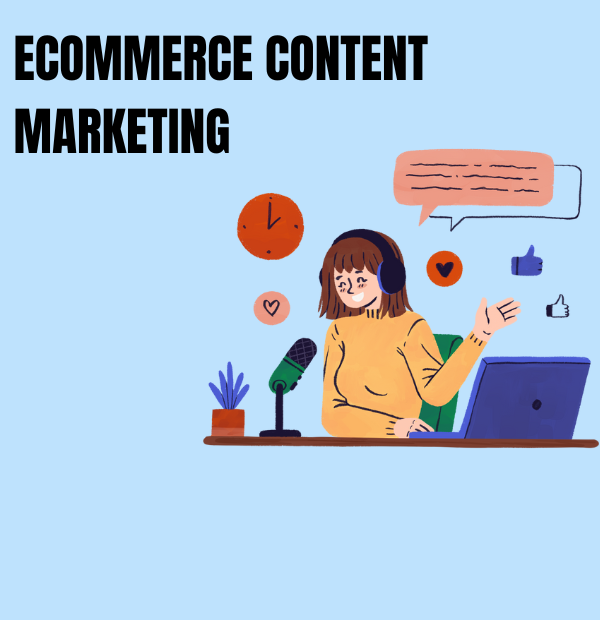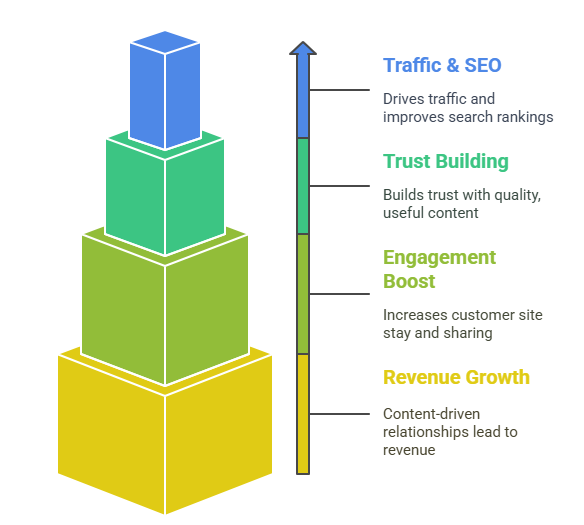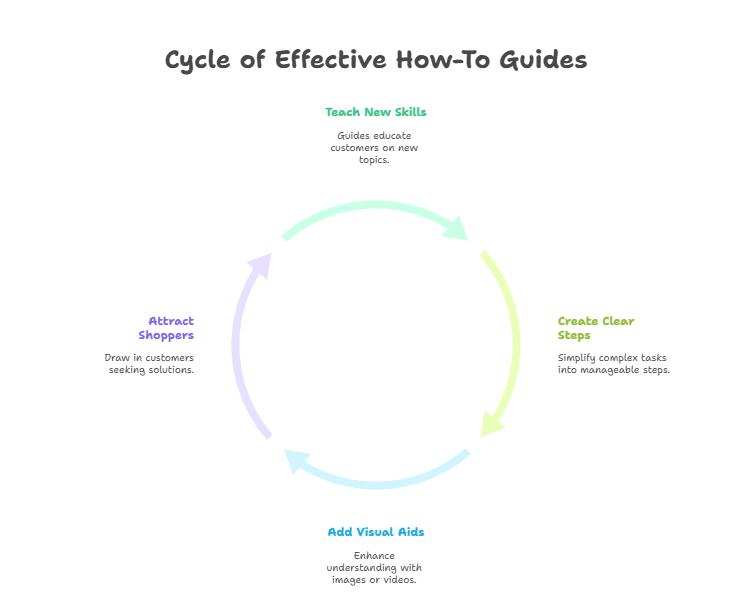Phygital+
Create on-brand images, videos & 3D models fast
$59

Why Ecommerce Content Marketing Matters
Why Ecommerce Content Marketing Matters
Content marketing drives traffic to your store. It improves search engine rankings. Shoppers find you through blogs or videos. Quality content builds trust with your audience. People prefer brands that share useful tips. For example, a blog about product use feels authentic. It shows you care about customers’ needs. Content also boosts engagement. Customers stay longer on your site. They share your posts, spreading your brand.
In 2025, 79% of B2B marketers say blogs effectively reach customers. This statistic shows blogging’s power for eCommerce too. Another stat: 71% of consumers view blog posts during their buying journey. These numbers prove content works.

Key Types of Ecommerce Content Marketing
Blog Posts
Videos
Social Media Posts
Social media shares your brand’s story. Post tips, quotes, or behind-the-scenes content. Use platforms like Instagram or TikTok. Engage with polls or questions. Social media is the top channel for content distribution. It reaches customers where they spend time.
User-Generated Content
Customers trust other customers. Share reviews, photos, or videos from shoppers. Encourage them to post about your products. User-generated content builds community. It feels real and relatable.
Email Newsletters
Emails keep customers updated. Share new products or helpful tips. Personalize emails for better results. In 2024, 73% of B2B marketers used email newsletters effectively. They nurture leads and build loyalty. Content Marketing Institute
How to Create Effective Ecommerce Content Marketing
Know Your Audience
Use Simple Language
Focus on Quality
Optimize for SEO
Add Visuals
Share Real Stories
“The best story wins.” – Chris Hanna, cited in Backlinko
Top Ecommerce Content Marketing Ideas for 2025
Write How-To Guides

Share Product Comparisons
Post Customer Stories
Create Seasonal Content
Use Interactive Content
Repurpose Content
Best Practices for Ecommerce Content Marketing
Plan a Content Calendar
Track Performance
Stay Authentic
Engage on Social Media
Reply to comments and messages. Ask questions in posts. Engagement builds community. It also shows customers you care. Social media is the top distribution channel in 2025. Content Marketing Institute
Common Mistakes to Avoid
Ignoring SEO
Overloading with Sales
Neglecting Mobile Users
Forgetting to Update
Skipping Visuals
Embedding a Helpful Video
FAQs About Ecommerce Content Marketing
What is eCommerce content marketing?
It’s creating content like blogs or videos to attract and engage online shoppers. It builds trust and drives sales.
Content marketing boosts traffic, improves SEO, and builds customer trust. It helps shoppers find and remember your brand.
Blogs, videos, social media posts, and customer reviews work well. They educate and engage shoppers effectively.
Post regularly, like weekly blogs or daily social posts. Consistency keeps your audience engaged.
Yes, AI helps with ideas and outlines. But always edit for a human touch to keep content authentic.
Conclusion

Automation and analytics, our in-depth evaluations and comparisons help you make informed decisions, empowering you to streamline your workflow and achieve your goals with confidence.
Categories
- Content Marketing Service
- Content Marketing Tools
- Products Review
- Resources
- Blog
Quick Link
- About us
- Contact us
- Disclosure
- Privacy Policy